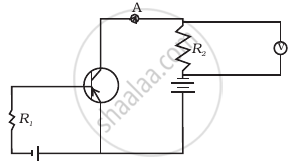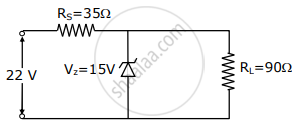Advertisements
Advertisements
Question
How is a photodiode fabricated?
Solution
A photodiode is fabricated by allowing light to fall on a diode through a transparent window. It is fabricated such that the generation of e-h pairs take place near the depletion region.
RELATED QUESTIONS
Colour of light emitted by LED depends upon__________________ .
- its forward bias
- its reverse bias
- the band gap of the material of semiconductor
- its size
The width of depletion region of p-n junction diode is _______.
(A) 0.5 nm to 1 nm
(B) 5 nm to 10 nm
(C) 50 nm to 500 nm
(D) 500 nm to 1000 nm
State its any ‘two’ uses of photodiode.
Explain how a potential barrier is developed in a p-n junction diode.
Write the important considerations which are to be taken into account while fabricating a p-n junction diode to be used as a Light Emitting Diode (LED). What should be the order of the band gap of an LED, if it is required to emit light in the visible range? Draw a circuit diagram and explain its action.
A p-n photodiode is fabricated from a semiconductor with a band gap of 2.5 eV. lt can detect a signal of wavelength ______.
If the resistance R1 is increased (Figure), how will the readings of the ammeter and voltmeter change?

Why a photo-diode is operated in reverse bias whereas the current in the forward bias is much larger than that in the reverse bias? Explain. Mention its two uses.
Draw solar cells of I-V characteristics.
The value of power dissipated across the Zener diode (Vz = 15 V) connected in the circuit as shown in the figure is x × 10–1 watt. The value of x, to the nearest integer, is ______.

